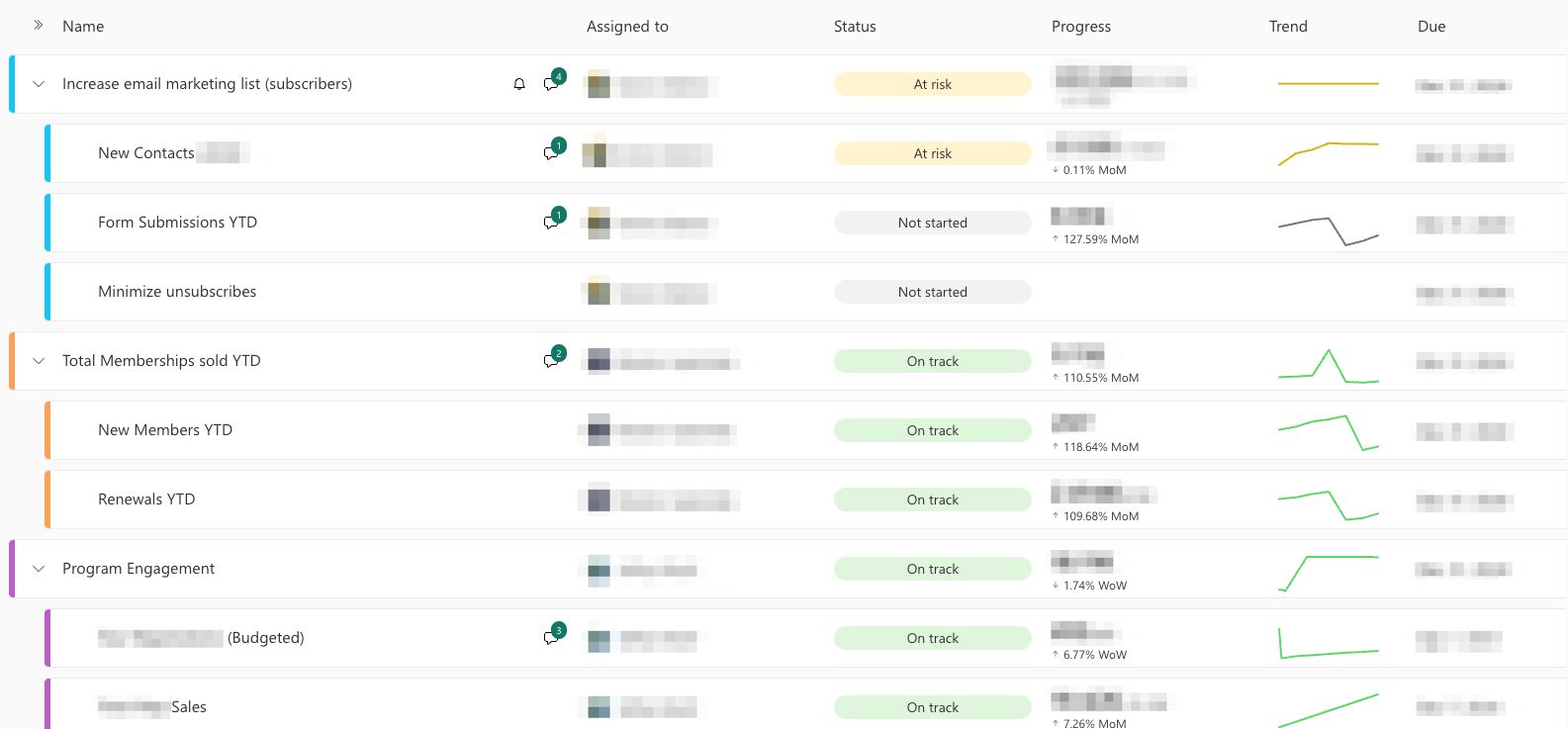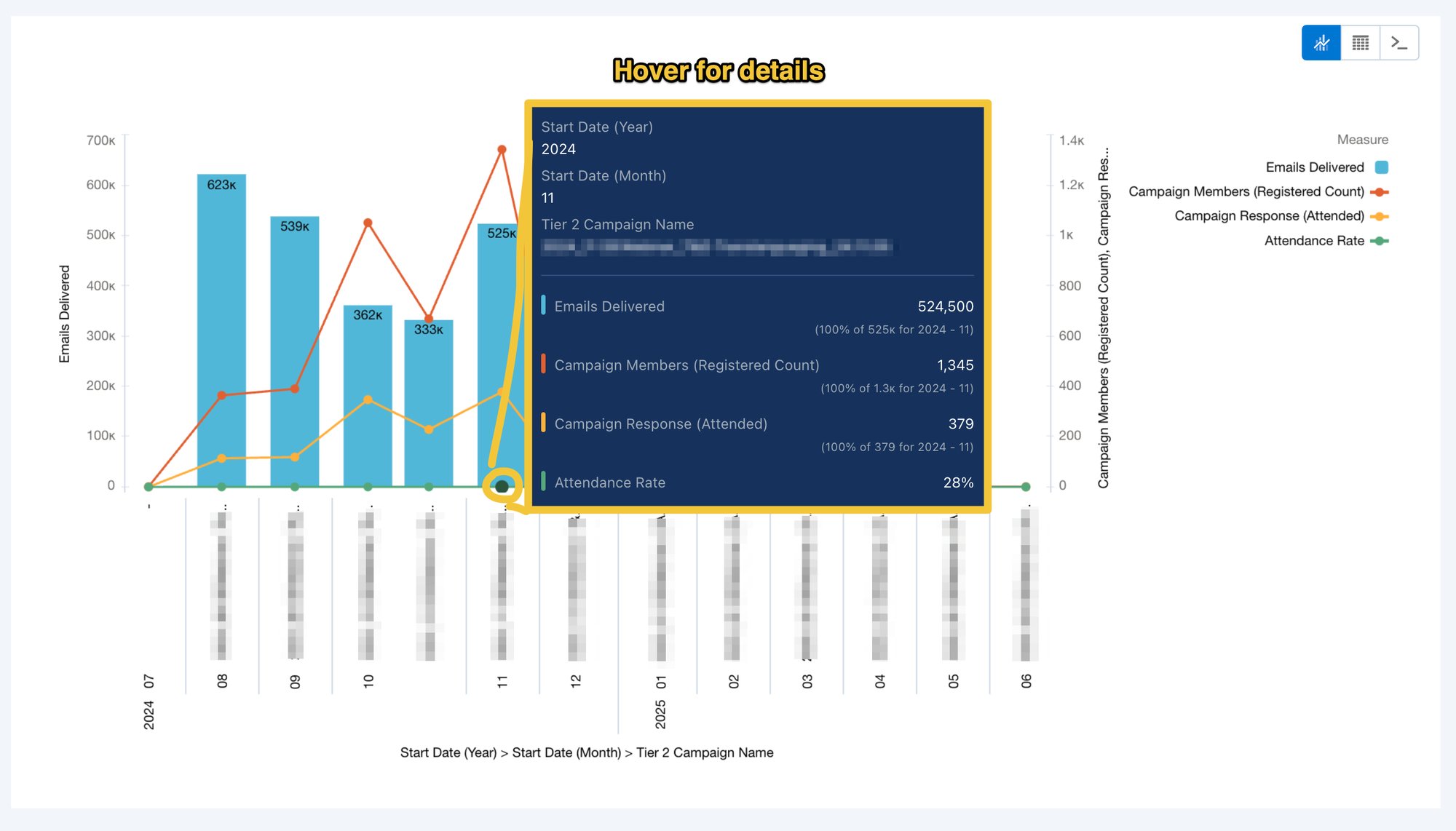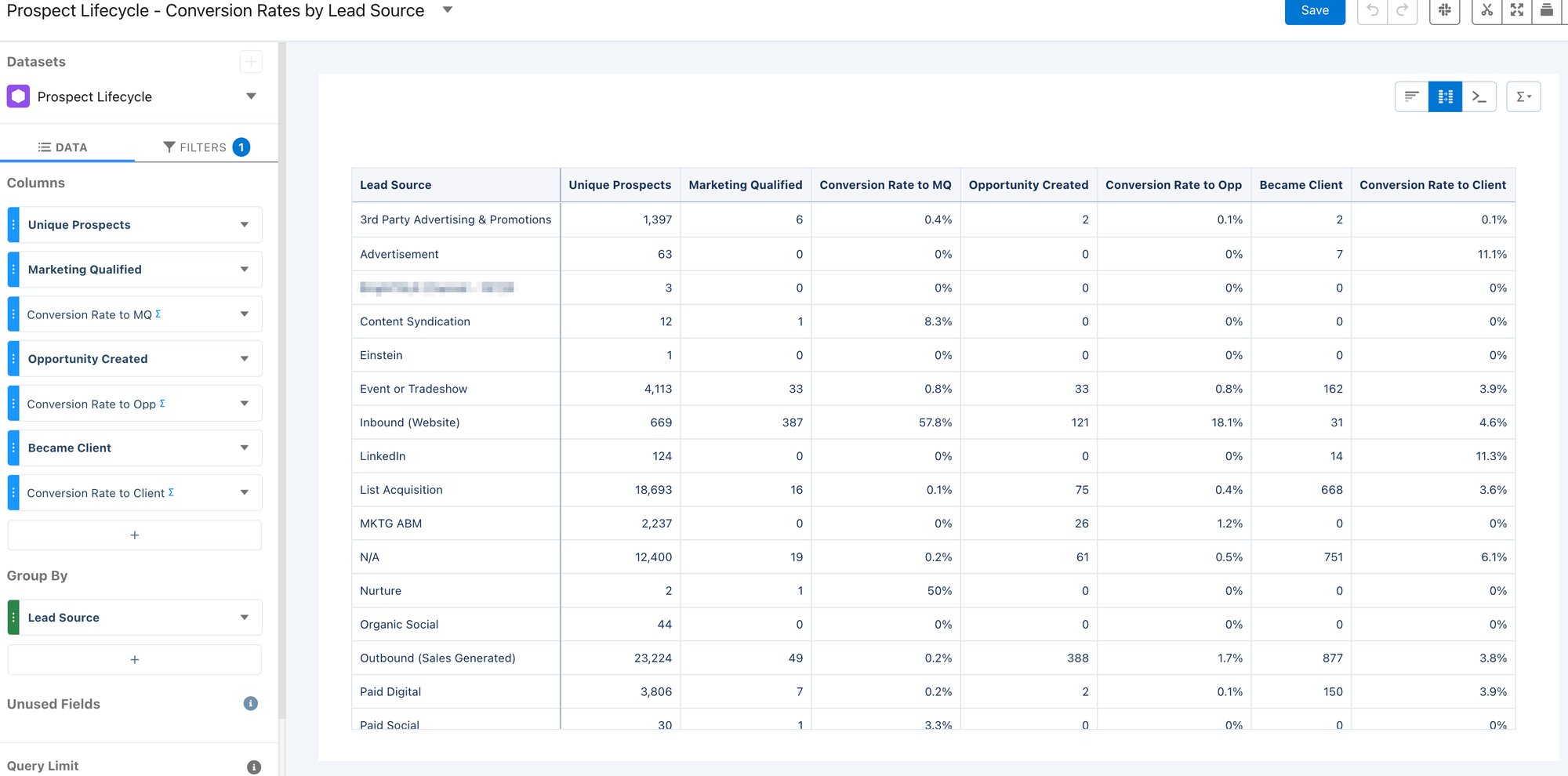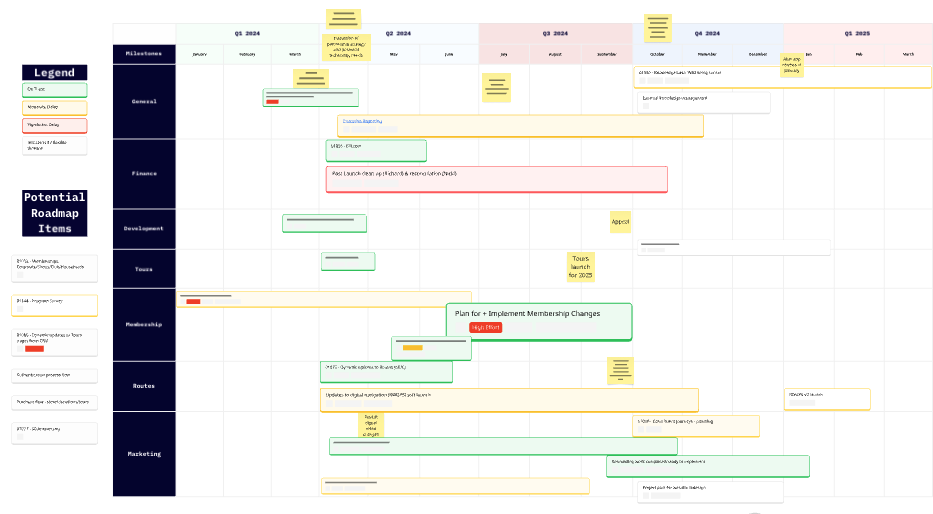Visuals of our work
We specialize in providing robust marketing and sales processes that can support sophisticated analytics. The following are some visual examples of our work, along with a summary of the challenge and solution delivered by Pedal Lucid.
Marketing Campaign Results
Challenge: Prior to working with Pedal Lucid, executive metrics for this SaaS company were compiled manually into Excel on a weekly basis. Not only was this time-consuming for staff, the previous process did not link each snapshot into a unified picture. There was no ability to look at changes over time, or zoom in/out on any weekly snapshot.
Solution: One dashboard now provides a unified view of cross-channel marketing efforts, cost, and engagement. The data feeding the dashboard includes numbers from the CRM, marketing automation tool, ad platforms, website analytics, and more. Filters allow the data to dynamically adjust—zero in on a specific campaign or expand the timeframe in focus—in a way that Excel never could.

Product Utilization
Challenge: An education nonprofit provides a digital service to schools around the country. Licenses are a single-use product that are sold in bulk and used over time. The client had data about sales and usage but—because schools typically make one purchase and spread the licenses out across one or more school year—it was hard to identify which accounts might need additional support using what they had purchased.
Solution: Analysis of existing data determined that it takes—on average—20 months for an account to use 90% of the licenses it had purchased. Collectively with the client, we agreed that the best indicator of healthy consumption is comparing current usage against purchase history 18 months prior. A treemap makes it easy to identify account size and utilization; hovering generates a popup with additional details. At-risk accounts can receive 1:1 outreach to ensure they have the support they require.

KPI Scorecard
Challenge: Lack of insight into real time health of the organization. Key numbers would change depending on how reports were created, stakeholders did not have a shared understanding of what numbers to focus on, and there was not a centralized process for reviewing and discussing progress.
Solution: The first step was to agree on a concise set of metrics that provided insight for the executive team into each department. From there, we created a business glossary that stored a shared definition of how each number was generated to ensure consistency. A KPI scorecard documents status updates during a brief weekly meeting, where department leaders provide an update for each metric and status: On Track, At Risk, Behind. The scorecard stores a history of updates and comments for future reference.

Webinar Engagement Over Time
Challenge: Webinars are an important marketing touchpoint, but it was difficult to understand how registration and attendance changed over time, or what topics performed the best.
Solution: A chart with multiple measures helps us quickly understand webinar trends month over month. It allows us to visually compare how widely it was promoted (blue bars) to RSVPs (red line) and actual attendance (yellow). When we hover over a particular data point, we have access to specific metrics including the attendance rate (count of attended / count of registered). This chart helps identify both general trends over time (is attendance up or down?) as well as particular webinars that may have had low total numbers but a high attendance rate..

Sales Goals Dashboard
Challenge: This client had specific sales targets across multiple product classes, but no unified way to monitor progress toward an overall goal or within each category. Out of the box forecasting did not provide the level of granularity required.
Solution: A custom forecasting build that supports targets set on any frequency (monthly, quarterly, annually) and for any type of product to roll up into a unified dashboard. A first page overview provides an executive-level summary, while subsequent tabs break the data down into more granular information. Filters on date range and product class make it easy to expand or contract our focus across all the charts. Colors and a bar chart provide a visual indication of progress, complemented by a table to the right with additional details.

Visualizing a Lifecycle Model
Challenge: Organizations, business deals, and individual people all relate to each other but but do not move through a marketing/sales process in lockstep. It’s difficult to create a unified process that keeps all elements interconnected while recognizing each needs some degree of independent movement. Operationalizing and reporting on the process add yet another layer of difficulty!
Solution: We typically break each element out into separate stages and use a process diagram to facilitate design workshops with multiple stakeholders.

Conversion Rates by Lead Source
Challenge: Prospects enter the system through a variety of marketing channels. How far they progress through the marketing/sales funnel isn’t stored cleanly on their person record, making it difficult to understand the likelihood a lead from any given source will eventually become a paying customer or client.
Solution: Building on a well-designed lifecycle model (above), a single report combines data from multiple sources to show conversion rates through each step of the prospect’s lifecycle. We can note some interesting details, such as the conversion rate to client is higher than the conversion rate to Opportunity—likely indicating that some lead sources tend to bring in existing clients.

Technology Roadmap
Challenge: There’s no unified view across the organization of what technology work is in progress or planned. Dependencies create unexpected bottlenecks, and opportunities for cross-department collaboration are missed.
Solution: We use a technology roadmap for all of our ongoing support and managed services clients, and revisit it at least quarterly with the entire leadership team. This provides cross-department visibility into the work and sets the context for high-level team discussions.

